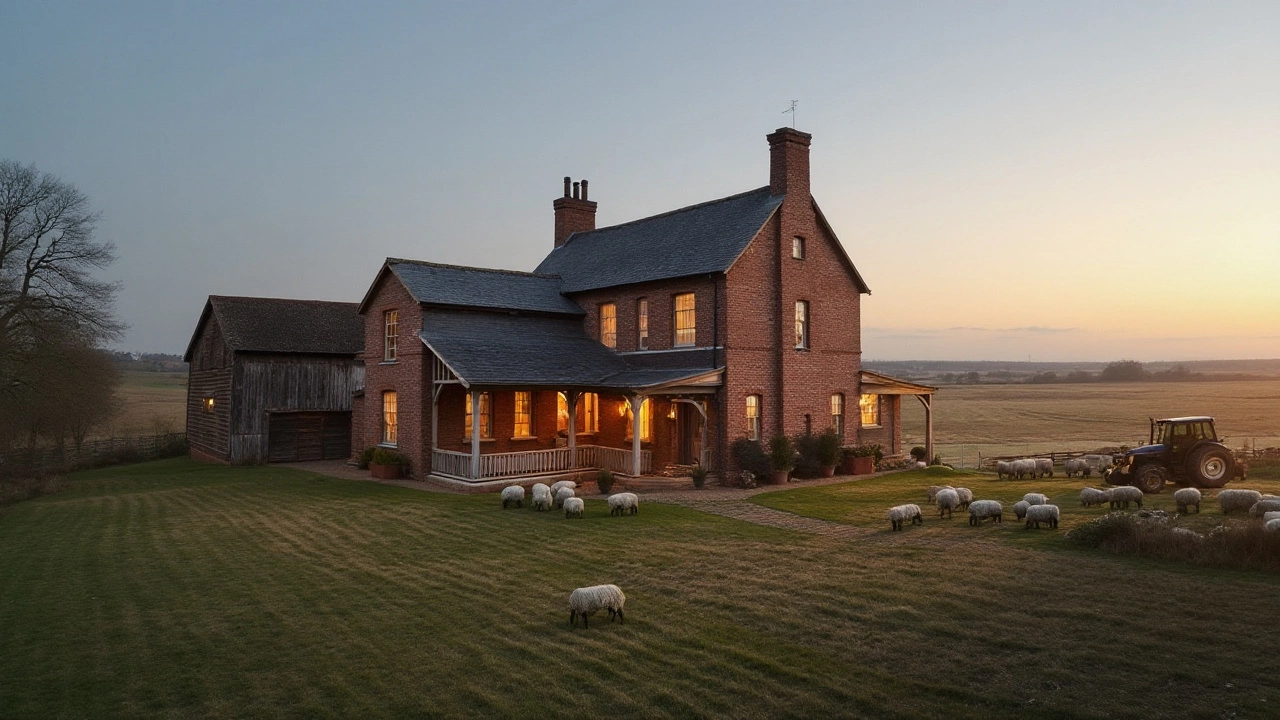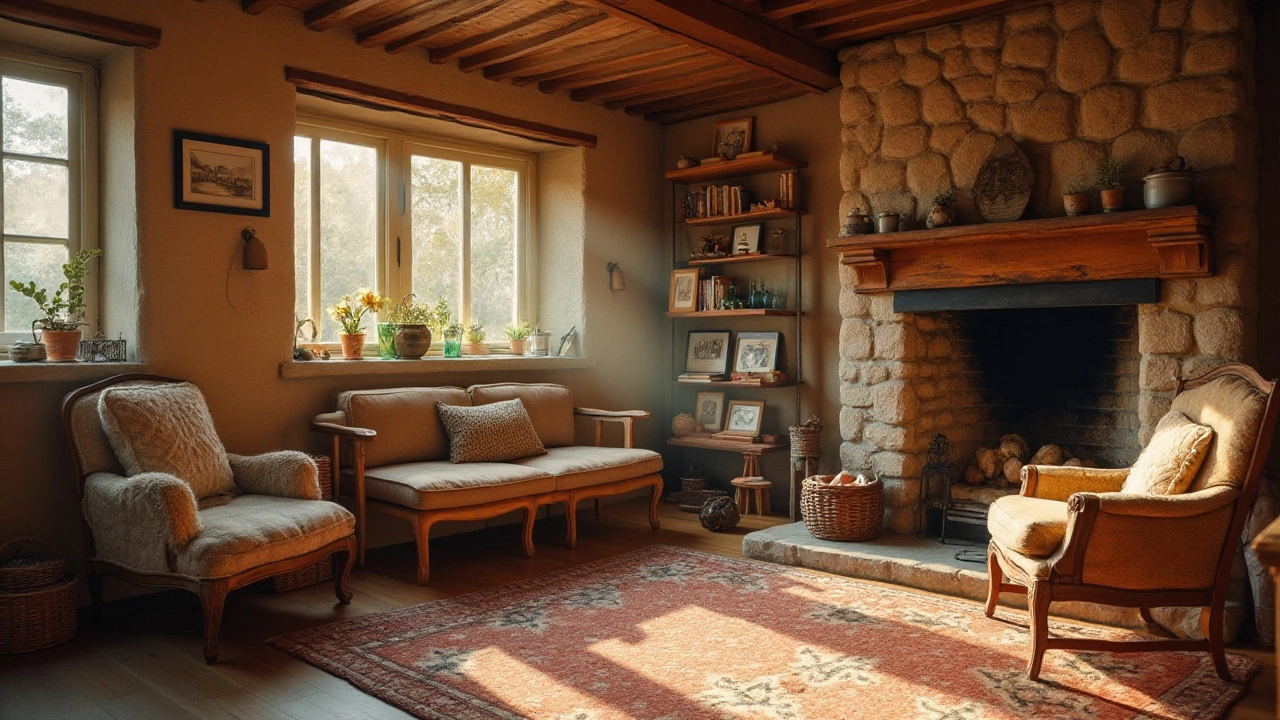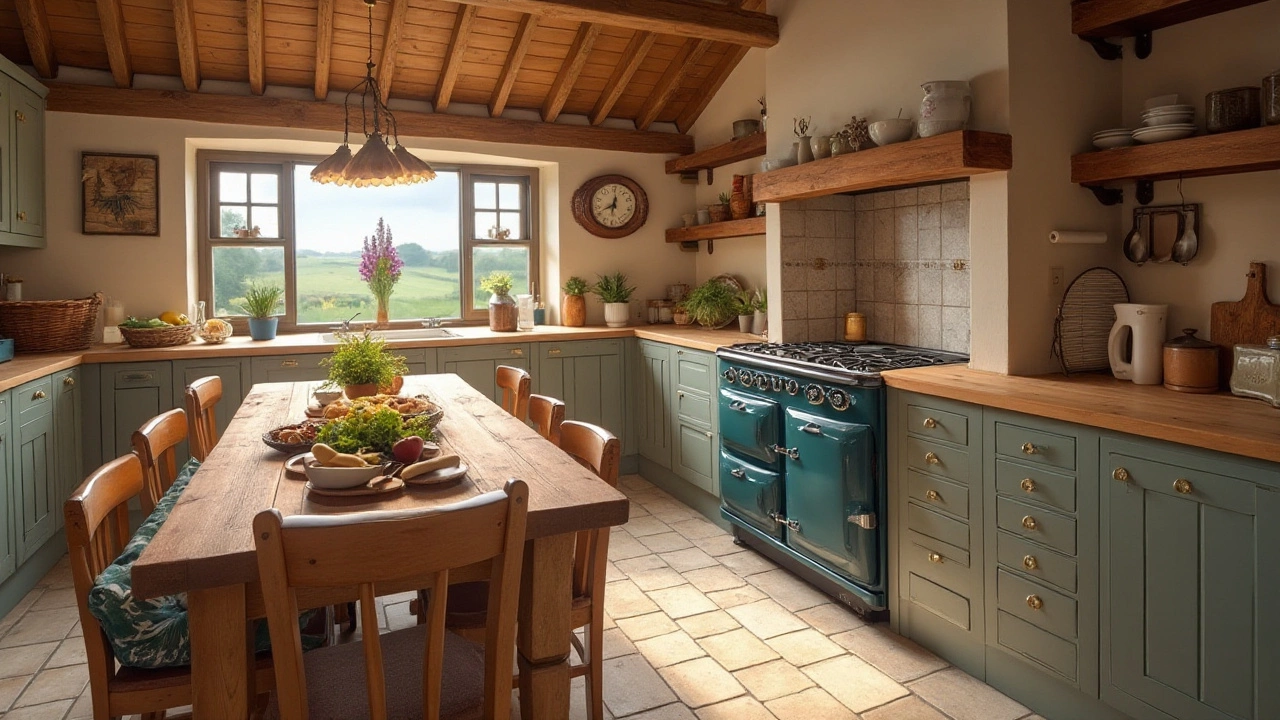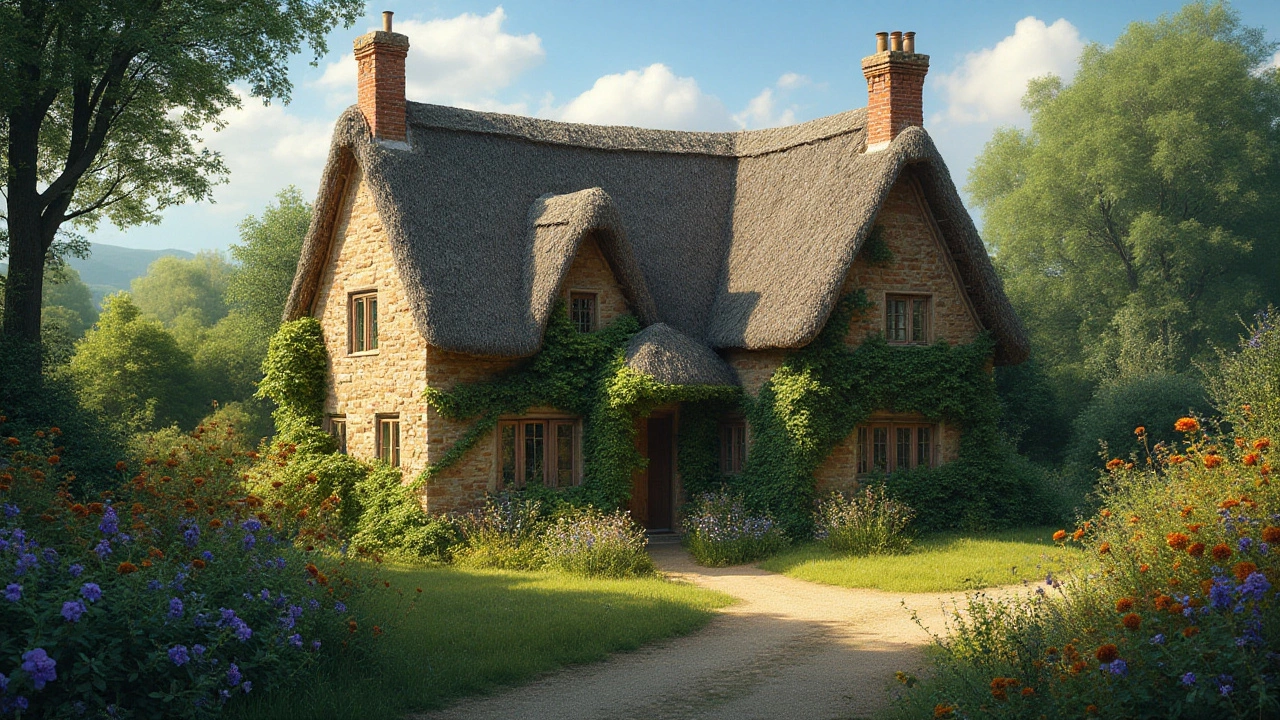Exploring the Unique Charms of Country Cottages vs. Farmhouses
14 Jan, 2025When it comes to rural homes, two popular choices often come to mind: the quaint country cottage and the sprawling farmhouse. Although both are set amidst idyllic landscapes and share a sense of rustic charm, they offer distinct living experiences.
Country cottages are typically smaller, imbued with a sense of intimacy and character, making them perfect retreats for those who appreciate warmth and coziness in a confined space. They often feature storybook designs with lush gardens, stone paths, and delightful thatched roofs.
Farmhouses, on the other hand, are associated with larger properties and are designed with practicality in mind. Their spacious interiors and exteriors reflect the lifestyle of agricultural regions, often accommodating the needs of working farms and larger families.
Understanding these differences can help you determine which style best suits your preferences and needs.
- Defining Country Cottages
- Exploring Farmhouse Characteristics
- Architectural and Design Differences
- Choosing the Right Rural Home for You
Defining Country Cottages
Country cottages conjure images of picturesque landscapes dotted with charming abodes that feel straight out of a fairy tale. Often nestled in serene countryside settings, these homes are known for their compact size and alluring intimacy. Historically, cottages were occupied by rural laborers, distinguished by their simple yet solid construction. Today, the appeal lies in their timeless charm and cosy interiors, offering an escape to tranquillity from the fast-paced urban life.
A signature feature of the country cottage is its picturesque exterior, typically featuring architectural elements like rustic stone or timber façades. They often come with steeply pitched roofs, sometimes thatched, which enhance their quaint appeal. Inside, the focus is on creating a warm, homely atmosphere. Many cottages boast exposed wooden beams, inviting fireplaces, and snug nooks that encourage relaxation. In modern interpretations, these homes blend traditional elements with contemporary comforts to meet the demands of today’s lifestyle.
Gardens play a crucial role in defining the charm of a country cottage. They are often lush and fragrant, filled with native plants and vibrant flowers. These gardens not only enhance the scenic beauty but also offer a tranquil space for leisure activities, adding to the holistic cottage experience. As Thomas Hardy once observed, “The comfort of the rural home lies as much in the garden spaces as within the house.”
Cottages are places where time seems to pause, allowing residents and visitors to savor a moment of delightful simplicity.
Despite their modest size, cottages often accommodate a variety of needs thanks to clever design solutions. Multifunctional spaces enable a seamless transition between living, dining, and sleeping areas. Attention to detail in interior design also plays a vital role, where a mix of vintage decor and clever storage solutions creates a space that is both appealing and functional. This conscious design approach makes country cottages perfect for individuals and families seeking both comfort and character in their abode.
Interestingly, some statistics reveal a growing interest in country cottage living, especially post pandemic, as people yearn for peace and nature. Real estate data has shown an uptake in the demand for these properties, driven by the desire to escape crowded cities. The value of country cottages has been appreciating, reflecting both their desirability and the rising costs associated with rural property development. As you seek the perfect balance between nature and comfort, cottages stand poised as a timeless choice.

Exploring Farmhouse Characteristics
The image of a farmhouse often conjures up visions of expansive fields, rustic buildings, and a robust lifestyle deeply rooted in agriculture. To truly understand the essence of a farmhouse, it’s important to unravel its unique features. Farmhouses are typically set on large plots of land, reflecting their origin as practical homes for those who worked the land. As a defining characteristic, they prioritize functionality and space, often possessing sprawling interiors designed to accommodate the needs of large families and their agricultural lifestyle. The architectural style of farmhouses can vary widely, but they often share common elements such as timber frames, A-frame roofs, and enduring materials that stand the test of time and the elements.
The interior design of a farmhouse tends to focus on utility without sacrificing comfort. Rooms are typically large, with high ceilings featuring exposed beams and unfinished wood that add to their rustic charm. This spaciousness is not just limited to living areas; kitchens in farmhouses are often sizable, becoming the heart of the home where the family gathers for meals and socializing. Kitchens usually feature large islands and extensive pantry storage, equipped to feed many people and frequently functioning as a workspace for food preparation from the farm's bounty.
Often reflecting the agricultural heritage, a farmhouse's layout may include mudrooms and large entryways designed for working families who need space to manage farm equipment, dirt, and boots. This functionality blends seamlessly with cozy features that make a house feel like a home, such as fireplaces, handcrafted furniture, and textiles that provide warmth and comfort. Modern farmhouses today often embrace a blend of traditional and contemporary elements, seamlessly integrating modern amenities while retaining a connection to their rustic roots. This has resulted in a popular home design style that boasts both aesthetics and practicality.
The revival of farmhouse style in modern home design can be largely attributed to homeowners seeking a balance between traditional charm and contemporary convenience. According to home expert Sarah Susanka, "Farmhouses are experiencing a resurgence because they offer a sanctuary—a place where one can feel connected to the earth and its rhythms." This connection, along with a love for open spaces, has made farmhouses a preferred choice for many seeking to escape urban life.
Using quality, durable materials is often a hallmark of farmhouse construction, ensuring that these homes can withstand hard work and the passage of time. Metal roofs, wooden siding, and stone foundations are common choices that serve both structural and aesthetic purposes. Additionally, these materials contribute to the farmhouse's sustainability, as they are often sourced locally and designed to last generations.
While the classic farmhouse remains popular, it's worth noting how adaptations have emerged to suit varying climates and regions. This versatility, alongside the appeal of space and comfort, has kept the farmhouse a relevant and cherished home style across the world. So, whether you're drawn to a traditional rustic farmhouse or one with a modern twist, it's evident that this home style continues to capture the hearts and imaginations of those who appreciate a deep connection to history and place.

Architectural and Design Differences
Exploring the architectural and design nuances between country cottages and farmhouses reveals the distinct personalities each brings to rural living. Often nestled within the countryside, a country cottage exudes charm through its compact form and intricate details. You’ll typically find steeply pitched roofs, quaint dormer windows, and possibly a touch of whimsical asymmetry. These homes blur the line between the indoors and outdoors, often integrating lush gardens, climbing roses, and stone pathways that enhance their inviting nature.
The interior of a cottage often speaks of comfort and simplicity, characterized by lower ceilings, exposed wooden beams, and cozy nooks by the fireplace. Original features like stone walls or a thatched roof might be preserved, adding a historical flair. It’s about using every bit of space innovatively, where even a bay window sill might double as a reading nook adorned with plush cushions. The aim inside is to evoke the feeling of escaping into a storybook tale. On the exterior, the façade often blends harmoniously with its natural surroundings, promoting a tranquil lifestyle away from the hustle and bustle of the modern world.
In contrast, the architecture of a farmhouse caters to practicality and space. Rooted in its agricultural origins, a farmhouse typically features a more straightforward, rectangular structure, expansive porches, and a symmetrical design. The interior prioritizes spaciousness and convenience, marked by sizable kitchens, open living areas, and functional layouts to accommodate large families or farming operations. The use of wood and metal in construction highlights durability, a nod to their utilitarian roots.
High ceilings and more prominent windows are common in farmhouses, allowing ample light to pour into large, functional rooms designed for gathering. Whereas cottages may charm you with their quirks, farmhouses impress with a sense of robustness and openness. They often come with features tailored for the agrarian lifestyle, such as mudrooms and barns-influenced aesthetics. It isn’t uncommon for a modern farmhouse to incorporate a minimalist approach while retaining elements like haylofts or silo barns—hints of its heritage.
In terms of gardens and landscaping, both styles showcase extensive use of natural elements, but each emphasizes different aspects. Cottages might prioritize intimate herb gardens or flowerbeds meant to enhance their already charming appearance. In contrast, farmhouses may possess fields that double as gardens, embodying utility and sustainability. The blend of working and leisure spaces signifies a farmhouse, inviting both labor and relaxation within its boundaries.
An esteemed designer once noted, "The essence of a farmhouse lies in its ability to transform necessity into beauty, where practicality meets pastoral elegance."
Selecting between these two homes ultimately boils down to the lifestyle you aspire to embrace. Whether it’s the intimate grandeur of a country cottage or the spacious utility of a farmhouse, each brings its own brand of rural charm and architectural brilliance to the table. Thinking of details, a cottage might delight with its pocket doors and garden views, while a farmhouse might impress with its barn doors and sprawling orchards.

Choosing the Right Rural Home for You
Finding the perfect rural home is a journey filled with excitement and important decisions. Whether drawn to the serene charm of country cottages or the expansive functionality of farmhouses, making the right choice depends on various factors, including your lifestyle, budget, and personal preferences. It's crucial to weigh these considerations carefully to ensure your rural dwelling aligns with your vision and aspirations for countryside living.
Country cottages offer an appealing option for those seeking compact, cozy spaces enveloped in charm. They often come with storybook aesthetics, featuring quaint details like thatched roofs, stonework, and whimsical gardens, perfect for those who value intimacy and a close-knit atmosphere. The limited space inside a cottage requires creative thinking. You might find joy in decorating with antique finds or crafting functional solutions for storage, turning every corner into a conversation piece. This type of home suits individuals or small families who prioritize simplicity and character over size.
In contrast, if you dream of a home that mirrors your love for openness and functionality, farmhouses could be your calling. With roots steeped in practicality, traditional farmhouses boast large kitchens and sprawling porches designed for expansive family gatherings and a lifestyle closely tied to the land. Often built with a view to accommodate farm operations, they provide plenty of space inside and out for gardening, animals, or even small-scale farming. Farmhouses are ideal for those who envision more extensive family needs or have aspirations for a semi-autonomous lifestyle in tune with nature.
Before making a decision, it's beneficial to consider what living in these homes entails. Think about maintenance and energy costs associated with older architecture and whether the layout fits your daily routines and future plans. A revamped cottage or farmhouse might come with modern amenities, but maintaining their original charm can require regular upkeep and care of vintage details. One homeowner was quoted in
Country Living Magazine, expressing, "Our cottage is like stepping into a quaint slice of history every day. But this does mean a little extra care to make sure all parts of this charm remain intact." While this sentiment adds emotional value, it also signifies the time and effort that come with older homes.
A key step in making your choice is visiting these rural properties to get a genuine feel for the lifestyle each offers. Observe how the space complements the natural surroundings and envision how your family dynamics would fit within the walls and grounds of the property. Consider the community and amenities nearby, as rural areas can vary greatly in accessibility and resources. Whether the gentle embrace of a cottage or the rugged promise of a farmhouse appeals to you, the right choice should make you feel enriched and at peace in your new rural sanctuary.

 by
by